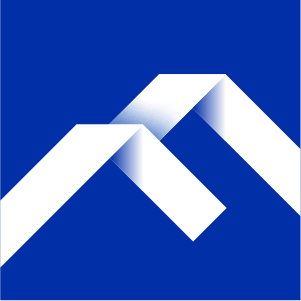Original author: Stacy Muur
Original translation: Luffy, Foresight News
After the frenzy of 2017, ICOs (initial coin offerings) have finally returned, but the dynamics are radically different from the chaotic Gas Wars of the past. This isn’t a nostalgia trip, but a completely new market structured by new infrastructure, more sophisticated allocation designs, and a clearer regulatory framework.
In 2017, anyone with just an Ethereum contract and a whitepaper could raise millions of dollars in minutes. There were no standardized compliance processes, no structured distribution models, and no framework for post-sale liquidity. Most investors jumped in blindly, and many watched their holdings plummet shortly after listing. As regulators stepped in, ICOs faded in the following years, replaced by venture capital rounds, SAFTs (Simple Agreements for Future Tokens), exchange IEOs (Initial Exchange Offerings), and later, retroactive airdrops.
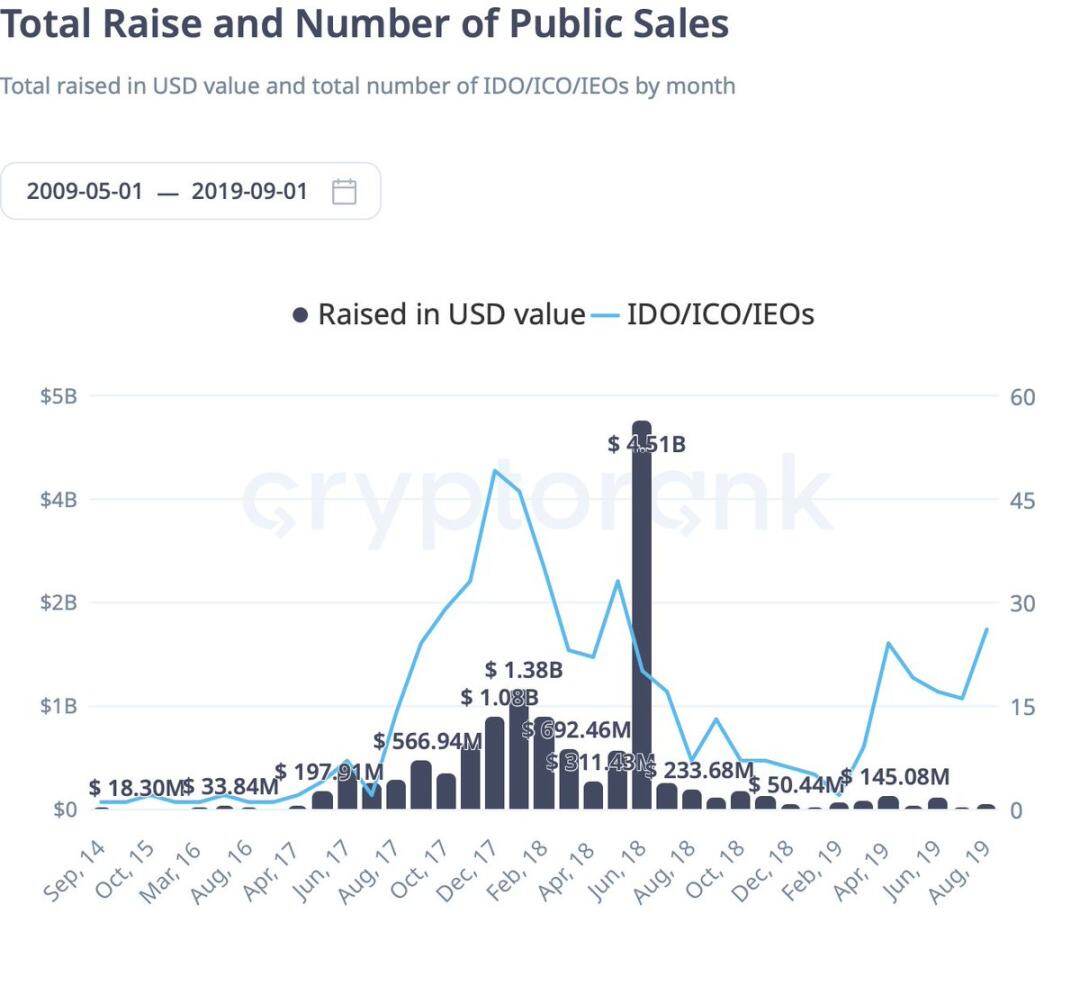
Now, in 2025, the trend has reversed.
But the change isn’t that projects are being issued at lower valuations; in fact, the fully diluted valuation (FDV) is higher than before. The real change lies in the access mechanism.
Launchpads no longer rely on pure speed competition or gas wars. Instead, they screen participants based on KYC (customer identity verification), reputation scores, or social influence, and then distribute quotas to thousands of participants in the form of small allocations rather than large quotas.
For example, on the Buildpad platform, I pledged $5,000 to Falcon Finance, but only received $270 in allocations. The remaining funds were refunded due to oversubscription. A similar situation occurred with Sahara AI, where I pledged $5,000 and only received $600 in allocations.
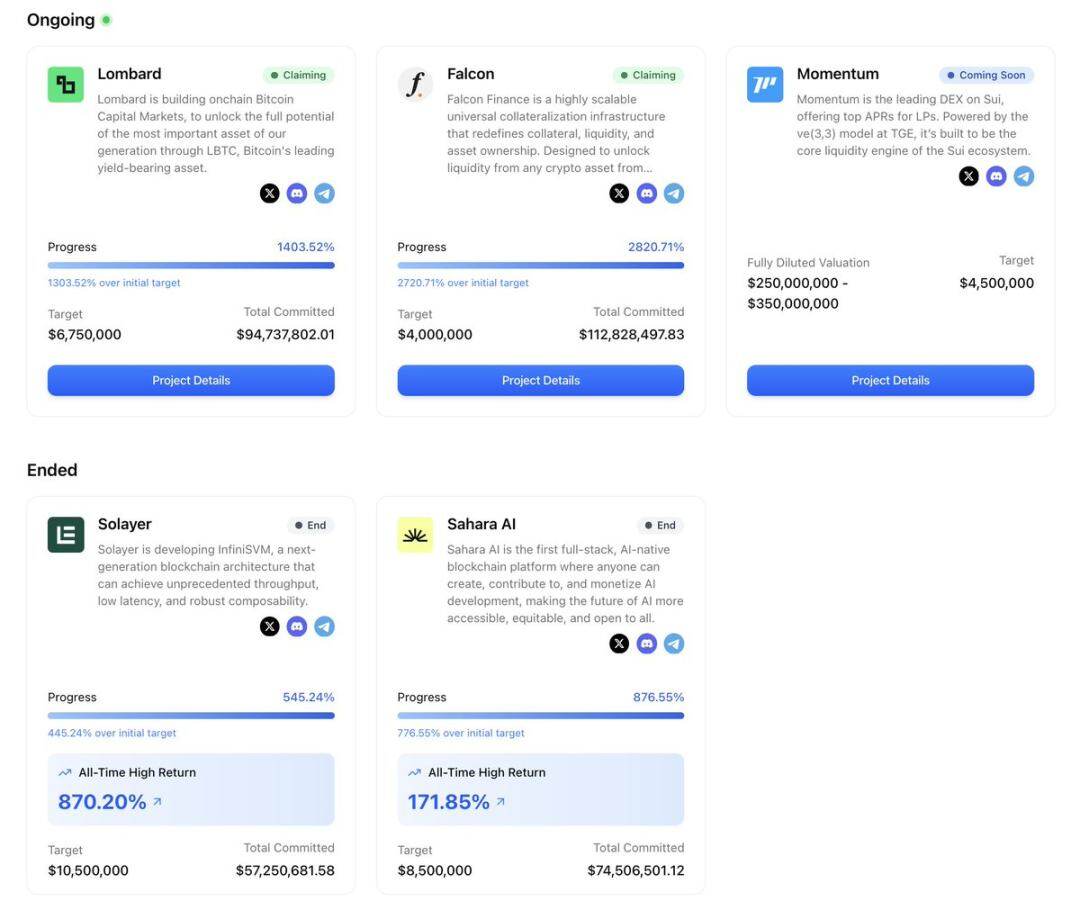
Oversubscription will not lower the price, but will only reduce individual quotas, maintaining a high FDV while achieving a wider distribution of tokens.
Regulation has also caught up. Frameworks like the EU’s MiCA (Markets in Crypto-Assets Regulation) now provide a clear path for compliant retail investors to participate, while issuance platforms have simplified KYC, geo-fencing, and eligibility checks to a simple configuration switch.
At the liquidity level, some platforms have gone a step further by encoding post-sale policies directly into smart contracts, automatically injecting funds into the liquidity pool, or stabilizing early transaction prices through a range mechanism of buying below a certain price/selling above a certain price.
By 2025, ICOs accounted for approximately one-fifth of all token sale transactions, up from a negligible share two years earlier.
This ICO resurgence isn’t driven by a single platform, but rather by a new generation of issuance systems, each addressing different pain points:
- Echo’s Sonar tool supports self-hosted, cross-chain offerings with switchable compliance modes;
- Legion partnered with Kraken Launch to integrate a reputation-based quota mechanism into the exchange process;
- MetaDAO has built-in treasury control and liquidity range functions at the launch stage;
- Buidlpad focuses on KYC access, a community-first distribution model, and provides a structured refund mechanism.
Together, these platforms have transformed ICOs from a chaotic fundraising vehicle into a carefully designed market structure where participation, pricing, and liquidity are planned rather than improvised.
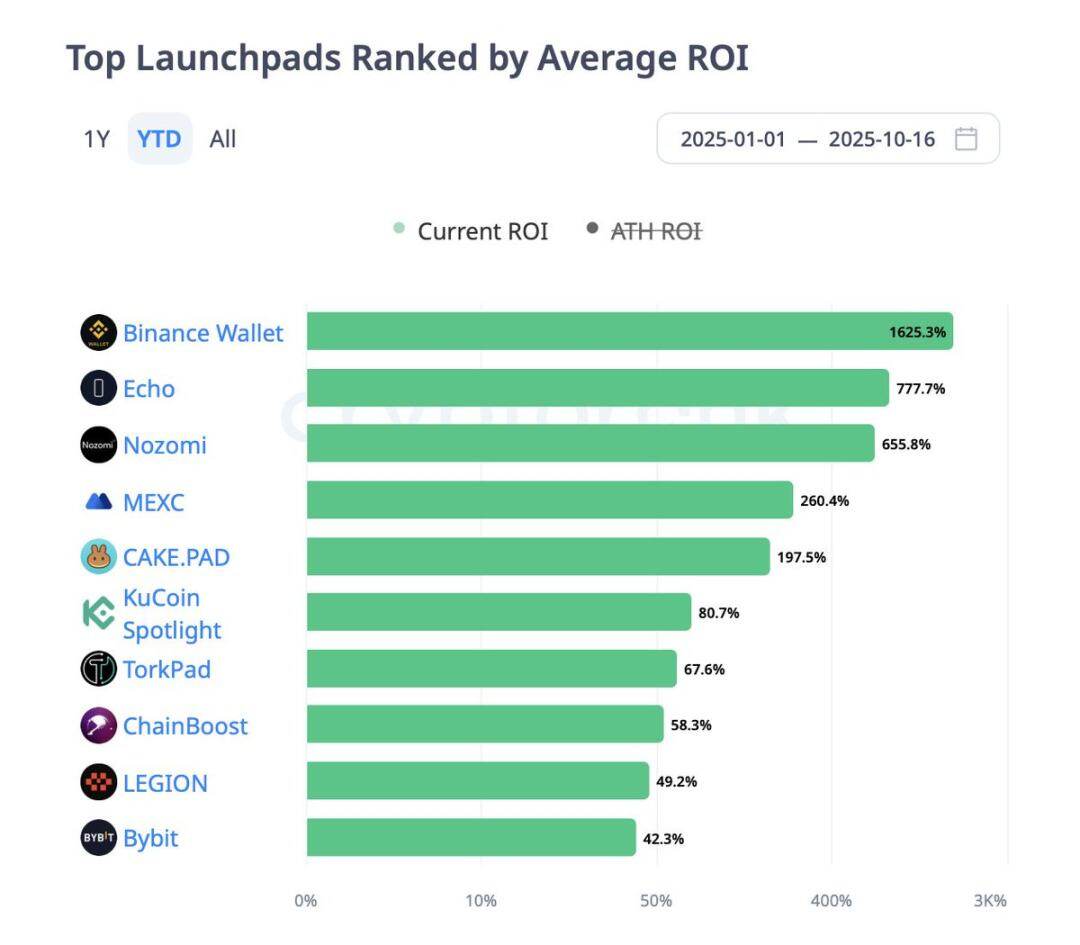
Each of these companies has addressed the pain points that plagued the market during the first wave of the ICO boom, and together they have created a more structured, transparent, and investment-rich environment. Let's analyze each one below.
Echo: Self-hosted, switchable compliance, and soaring popularity
Echo, founded by Cobie, has become one of the groundbreaking token launch infrastructures of 2025 with its self-hosted public offering tool, Sonar. Unlike centralized launchpads or exchange-based initial coin offerings (IEOs), Echo provides infrastructure rather than a marketplace. Projects can choose their own offering format (fixed price, auction, or treasury/credit model), set KYC/accredited investor verification/regional restrictions through Echo Passport, distribute their own offering links, and support launching on multiple chains, including Solana, Base, Hyperliquid, and Cardano.
The platform is growing rapidly:

Echo's most notable example is Plasma. In July of this year, the project, using a time-weighted treasury model, sold 10% of its tokens at $0.05, attracting over $50 million in pledged funds. Plasma's all-time high return on investment (ROI) reached 33.78x, making it one of the best-performing ICOs of the year. LAB, closely followed, also achieved a 6.22x return upon listing.
Here's a rundown of recent Echo releases:
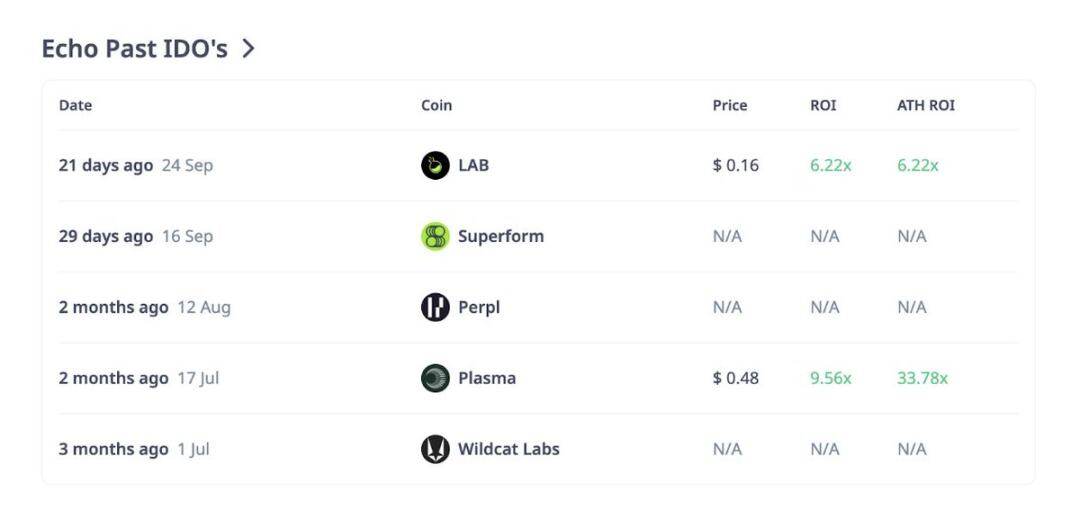
These figures reflect both the potential for returns and the variability of returns. While Plasma and LAB have delivered high multiples, other projects like Superform and Perpl have yet to go public or release results. It's important to note that Echo doesn't enforce a post-sale liquidity framework; liquidity pool injections, market maker requirements, and unlocking schedules are determined by the issuer, not the platform itself.
Investor Note: Echo's flexibility makes it the highest-return startup infrastructure in this cycle, but it also requires investors to do their due diligence. Be sure to confirm the following three points:
- Compliance switch settings (KYC/Qualified Investor Rules);
- the form of offering (vault, auction, or fixed price);
- The issuer's liquidity plan (this is not a standardized requirement in Echo).
Legion and Kraken Launch: Combining Credibility and Regulation
If Echo represents issuer-led flexibility, Legion is the exact opposite; it is a structured, reputable, public offering channel.
Kraken Launch officially launched in September of this year, powered entirely by Legion technology. This marked the first time a token sale was conducted directly within a Kraken account, adhering to MiCA compliance requirements and prioritizing participants based on reputation scores.
The platform is growing rapidly:

At the heart of Legion is the Legion Score—a reputation metric ranging from 0 to 1000 that’s calculated from a combination of on-chain activity, technical contributions (such as GitHub commits), social interactions, and endorsements from others.
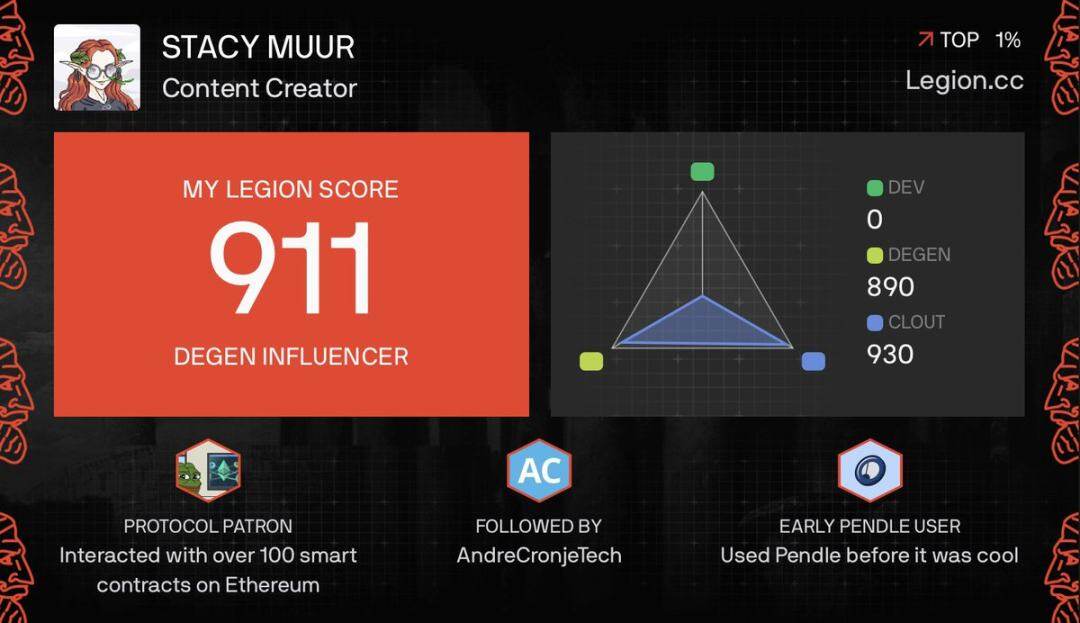
Projects can reserve a certain percentage of token allocations (usually 20%-40%) for high-scoring users, with the remaining allocations then available on a first-come, first-served basis or through a lottery. This completely overturns the traditional ICO allocation model: instead of rewarding the fastest bots, rewards are given to developers, contributors, and influential community members.
The following is an overview of Legion's recent launches:
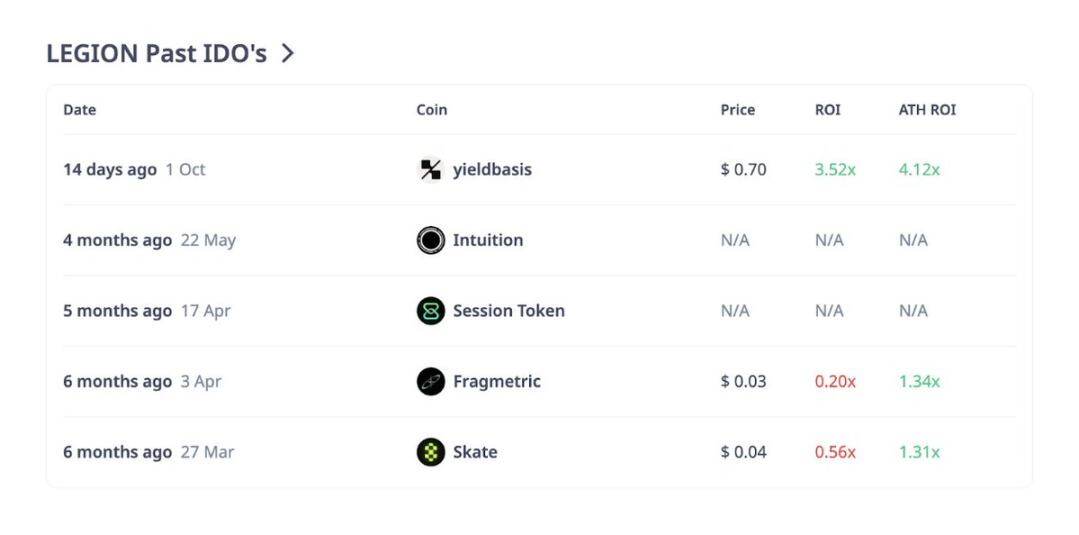
Kraken's integration also adds an extra layer of security: exchange-level KYC/Anti-Money Laundering (AML) audits and first-day liquidity. This is essentially a combination of an IPO-style launch and a community quota mechanism. Early examples like YieldBasis and Bitcoin Hyper saw significant oversubscription during their premium phases (for high-scoring users), while lower-scoring users were directed to the limited-cap public offering rounds.
Of course, it's not perfect. Some early users have pointed out that the Legion score may overemphasize social influence—holders of large X platform accounts may be ranked higher than actual developers, and the transparency of the score weighting system needs to be improved. But compared to the chaotic lottery system of the past, it is a significant improvement.
Investor Note: Legion Scores are crucial. To secure allocations in high-quality project offerings, it's crucial to build on-chain records and contribution profiles as early as possible. Additionally, be sure to confirm the allocation ratio between each project's Premium Round and Public Offering Round, as these rules vary between projects.
MetaDAO: Mechanisms first, marketing second
MetaDAO is doing something no other startup infrastructure has ever attempted: encoding aftermarket policies directly into the protocol itself.
Its operating mechanism is as follows: if the sale on MetaDAO is successful, all USDC raised will be deposited into the treasury managed by the market, and the token minting authority will be transferred to the treasury; the treasury will inject 20% of the USDC, along with 5 million tokens, into the liquidity pool of Solana DEX; at the same time, the treasury is set to "buy when it is lower than the ICO price and sell when it is higher than the ICO price", forming a soft price range around the anchor price from the first day of the sale.
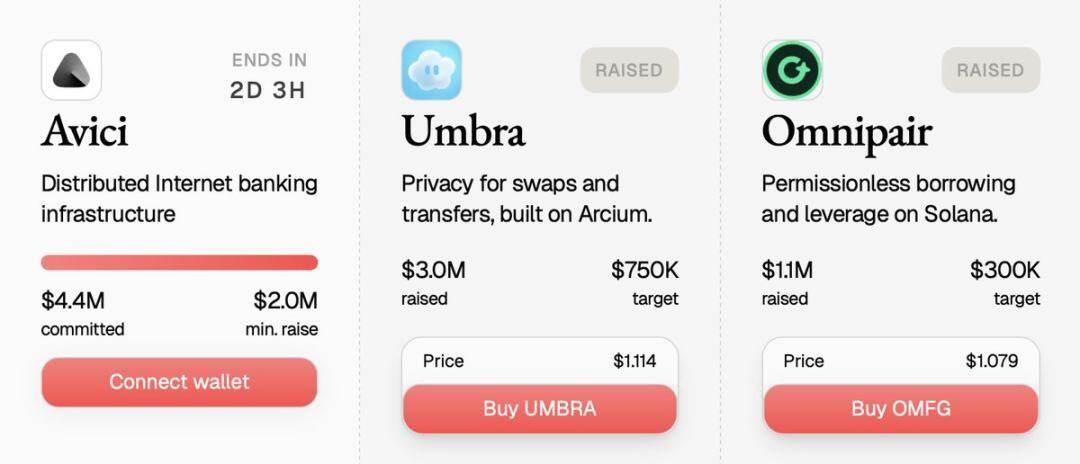
This seemingly simple mechanism radically alters the dynamics of early-stage trading. In traditional ICOs, insufficient liquidity or insider selling can cause secondary market prices to plummet. However, with MetaDAO's price range mechanism, early prices tend to fluctuate within a defined range—smaller declines and limited surges. This is a mechanism, not just a promise. If market demand is completely absent, the treasury will eventually run out, but it can guide market behavior on the crucial first day.
A prime example is Solana's privacy protocol, Umbra. Umbra's ICO attracted over 10,000 participants, with pledged funds reportedly exceeding $150 million. The ICO page even displayed large allocation data in real time. Witnessing this transparent distribution firsthand offers a glimpse into the future of more structured ICOs—one that's transparent, on-chain, and policy-controlled.
Investor Note: When participating in the MetaDAO offering, be sure to note the ICO price and understand the price range rules. If you buy slightly above the upper limit of the range, be aware that the Treasury may become your counterparty (selling tokens) during price appreciation. If you buy slightly below the lower limit of the range, the Treasury may take over your position. MetaDAO rewards investors who understand the mechanics, not speculators chasing hype.
Buidlpad: Embracing compliant retail investors
Buidlpad focuses on a simple yet powerful function: providing a clear path for compliant retail investors to participate in community rounds. Founded in 2024, the platform's core process consists of two phases: first, users complete KYC registration and make an appointment; then, they submit a capital commitment within the funding window. If the offering is oversubscribed, the excess funds will be refunded. Some offerings also manage demand through a tiered FDV, with lower FDVs in early stages and higher FDVs in later stages.

Buildingpad achieved a milestone in September of this year with the launch of Falcon Finance. The project, which targeted $4 million, ultimately secured $112.8 million in commitments, an astonishing 28 times oversubscription. The Know Your Customer (KYC) phase took place from September 16th to 19th, the funding phase from the 22nd to 23rd, and refunds were completed by the 26th. The entire process was smooth, transparent, and driven entirely by retail investors.
Simplicity is Buildingpad's strength. It doesn't employ a complex scoring system or a predictive treasury, focusing solely on providing structured participation channels for the community that passes compliance reviews. However, it's important to note that liquidity remains entirely dependent on the issuer's planning, and decentralized issuance across multiple chains can sometimes lead to fragmented post-sale trading volume.
Investor Note: Mark key dates. KYC/appointment windows are hard thresholds; missing them will result in ineligibility for quotas. Also, carefully review the tier structure—entering the market at an earlier stage often offers lower FDV.
Cross-platform commonalities and risks
Overall, these platforms share several common characteristics:
- Oversubscription is common, but the hype isn't always sustainable. Falcon's 28x oversubscription, Plasma's hundreds of millions of dollars in interest, and Umbra's massive demand all seem impressive headlines. However, without sustained usage, high FDV often means early prices will fall after the after-sales hype fades.
- Volatility is determined by the mechanism. MetaDAO's buy and sell ranges do reduce volatility, but they also cap profits near the sell range. Echo and Buildpad rely entirely on issuer self-regulation, while Legion relies on exchange listings to provide deep liquidity.
- The reputation system changes the allocation logic. With Legion, building a score early can mean the difference between getting a decent allocation and scrambling in the restricted public sale pool.
- Compliance screening is a strength, not a weakness. While mechanisms like KYC windows, qualified investor accessibility, and premium score screening reduce confusion, they also exacerbate stratification.
Beneath these facades, risks remain: the scoring system could be manipulated, the treasury could be mismanaged, large holders could still dominate quotas through multiple wallets, and regulatory enforcement could lag behind marketing hype. These mechanisms are not a panacea; they simply change the landscape of market competition.
Investor Guide to 2025
If you want to respond wisely to the new wave of ICOs, you need to think structurally:
- First, clarify the mechanism, then curb FOMO. Is it a fixed price or an auction? Is there a premium period or is it purely first-come, first-served? Is there a treasury price range or is it completely laissez-faire?
- Mark your eligibility windows. KYC/appointment deadlines, accredited investor requirements, geographic restrictions—miss one date and you could lose out on your entire allocation.
- Understand liquidity plans. Is it MetaDAO's coded liquidity range? Kraken's exchange listing? Or the issuer's own plan on Sonar? Liquidity determines early price action.
- Targeted layout. Participating in MetaDAO requires understanding the price range, participating in Legion requires accumulating scores early, and participating in Buildingpad requires aiming for the early stages.
- Manage your positions appropriately. Oversubscribed hot projects don't necessarily indicate strong secondary market performance. Treat these investments as structured bets, not guaranteed moonshots.
Author's Thoughts
The return of ICOs in 2025 isn't about nostalgia, but about new infrastructure, new rules, and a more regulated market. Platforms like Echo, Legion, MetaDAO, and Buildlpad have each addressed some of the flaws of the 2017 ICO model: some focus on compliance, others optimize quotas, and others refine liquidity policies. Together, they are transforming public token sales from a speculative frenzy to a more structured process of capital formation.
For investors, this means that the advantage is no longer just about getting in early, but about understanding the mechanism. Because in 2025, ICOs are not dying out, but maturing.
- 核心观点:ICO以全新机制回归市场。
- 关键要素:
- 准入机制采用KYC和信誉评分。
- 超额认购缩小配额维持高估值。
- 智能合约自动管理流动性。
- 市场影响:推动代币发行结构化透明化。
- 时效性标注:中期影响


